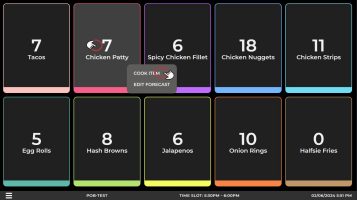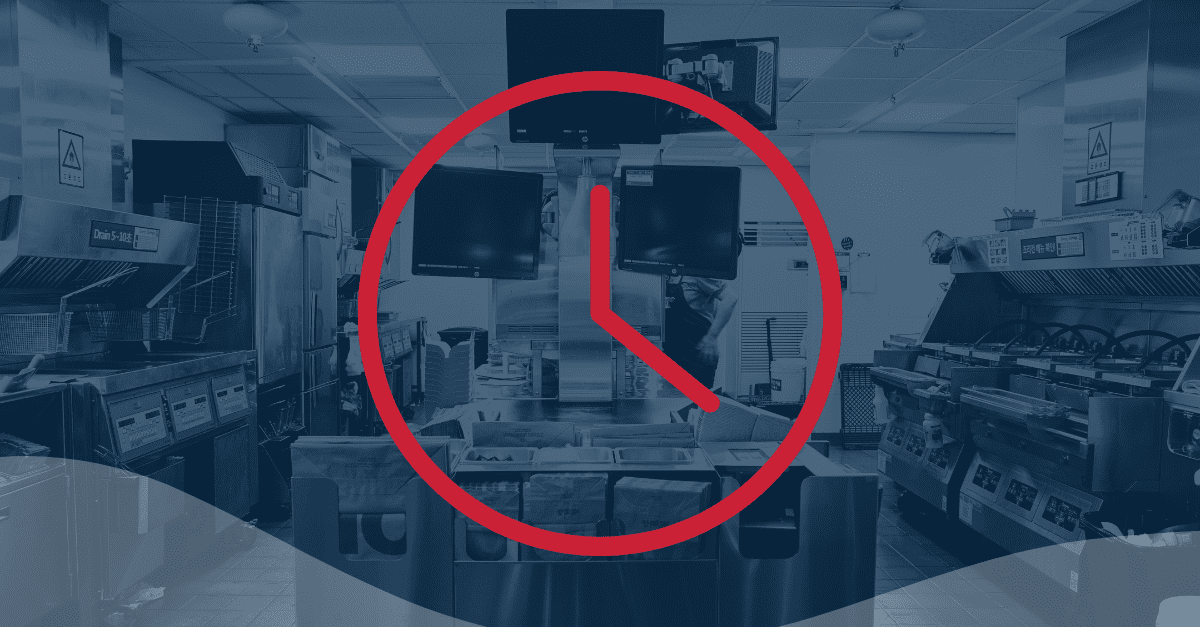In today’s fast-paced and highly competitive restaurant industry, staying ahead means more than just offering great food; it requires delivering delightful guest experiences, every time. And today, the biggest bottleneck in fulfilling that promise is outdated kitchen technology. Upgrading your kitchen is no longer a nice-to-have—it’s a necessity.
Here are 5 reasons why you should consider a kitchen upgrade:
1. Enhance order accuracy
Sixty-four percent of brands surveyed say that order accuracy is mediocre or weak, which has a direct impact on guest satisfaction. When a kitchen is well-orchestrated and combines the art of cooking with the science of order management, both employees and guests experience the positive impact of accurate and efficient service. Factors like ensuring the right food is in the right bag, confirming the driver has all the bags, and verifying order modifications all raise the level of service.
Unified kitchen systems that integrate data from all ordering channels—digital, in-store, and delivery—play a vital role in optimizing order management. Embracing a holistic kitchen management system, not just a modern KDS, with solutions like a command center for the kitchen and an order ready board can transform the overall guest experience.
Holistic, well-integrated kitchen technology reduces mistakes in order preparation, which is crucial for maintaining guest satisfaction and loyalty. While a modern KDS is a solid starting point, adopting a modern kitchen management system will take your operations even further. You can enhance accuracy and prevent costly errors that could harm both your reputation and bottom line. Implementing this technology will not only strengthen your operations but also elevate the overall guest experience with significantly improved order accuracy rates.
2.
Accelerate speed of service
It’s not just about order accuracy; today’s guests expect both order accuracy and promptness. Integrating kitchen technology is essential for boosting the speed of service and enhancing operational efficiency. A unified platform can streamline operational workflows, allowing for faster food preparation and order fulfillment. The best part? This means quicker turnaround times and, of course, happier guests. Who doesn’t appreciate the delight of having their food ready promptly after ordering?
Upgrading your kitchen technology will help you meet high guest expectations and reduce wait times for both guests and Delivery Service Providers (DSPs). Additionally, leveraging Edge technology ensures accurate and timely order delivery by processing data locally and running AI/ML models at the store level to boost performance. This localized processing minimizes latency and allows for real-time adjustments, ensuring that operations are agile and responsive to changing demands. With all these benefits, it’s no wonder that the U.S. Edge computing market size is expected to reach USD 8.44 billion in 2024 from USD 6.08 billion in 20231.
When talking about speed, nothing is more top of mind than drive-thru efficiency. According to Intouch Insight’s 24th Annual Drive-Thru Study, when an average meal costs $11.05; just a 5-second reduction in drive-thru time can save ~ $10k per store annually 2. The promise of increased accuracy and speed at the drive-thru is being tested with AI at many leading QSRs, including Wendy’s, Taco John’s, Carl’s Jr, and Checkers.
3. Improve promised ready time
With 9 out of 10 guests who have had an unhappy experience likely to never return, why risk failing to provide accurate promised ready times3?
Armed with the right information at your fingertips, you can dynamically adjust ready times, turning a static promise into a responsive solution that adapts to real-time conditions. I bet you’re thinking are they introducing another AI-based tool? Yes, and here’s why: AI-based tools offer accurate estimates for order readiness by considering factors like historical and current order volume, labor availability, and preparation time. Consistently meeting promised ready times elevates the guest and DSP experience while building trust.
Embracing AI-enabled technology is crucial for aligning your kitchen’s performance with the expectations of today’s savvy guests. This proactive approach means you’re not just meeting expectations but actively managing them, helping to also drive guest retention. Qu’s platform natively incorporates AI capabilities from day one. We’re actively optimizing our AI-based tools daily, along with our integrated partners, including promised ready times.
4. Reduce food waste
Advanced kitchen technology can significantly boost both the guest experience and operational efficiency. While you may be tired of hearing about AI, this is one tangible area where AI can make a difference—NOW. By leveraging AI-powered insights that combine current and historical data, along with external factors, it becomes possible to effectively forecast food preparation needs. This approach is not just predictive; it’s proactive and interactive, enabling the preparation of just the right amounts to meet expected demand.
As a result, you’ll improve speed of service and significantly reduce food waste by preventing over-preparation. This “smart” technology integrates with back of house (BOH) systems to help cut costs and minimize overproduction, while supporting sustainable practices that resonate with today’s environmentally-conscious guests. Ultimately, it leads to a better experience for your guests and a more efficient, cost-effective kitchen operation. Benefits include:
- Cost Savings
- Strengthened Sustainability
- Precise Food Preparation
- Improved Staff Efficiencies
It’s time to take food waste seriously; it has a profound financial impact on your restaurant’s success. Reports estimate 4-10% of purchased food goes unsold4, which can translate to a loss of $200-$500 in revenue each day for a QSR generating $5,000 in daily sales. Over the course of a year, this waste could cost you between $73,000-$182,500, an amount that can severely affect your already narrow profit margins. Addressing this issue isn’t just a matter of sustainability; it’s a crucial step toward improving your bottom line.

5. Boost staff productivity
Lastly, staff productivity plays a crucial role in optimizing your restaurant’s overall performance. Today, many operators grapple with the dual challenges of attracting staff and reducing turnover. It’s no surprise as QSRs experience an average turnover rate of 139% which is one of the highest across industries 5.
Employee turnover is expensive.
In fact, costs can range from 50-200% of an employee's salary—costing the restaurant $5,800 per employee6.
By upgrading kitchen systems, you can streamline tasks and enhance data visibility, allowing your team to effortlessly access orders from all channels—digital, in-store, and third-party—all in one centralized platform. This cohesive view not only helps staff manage their responsibilities more efficiently but also alleviates the stress of juggling multiple information sources. Modernizing your kitchen fosters a supportive environment that boosts staff performance and job satisfaction, ultimately reducing turnover rates.
In Summary
Upgrading your kitchen is not just a strategic move; it’s essential for transforming your operations. By reducing food waste, accelerating speed of service, enhancing order accuracy, improving promised ready times, and boosting staff productivity, you position your restaurant for success in a competitive market.
We’re excited about innovations like Qu’s Smart Kitchen, which blend AI and automation with human expertise to address the challenges of today’s omni-channel ordering environment. By embracing such advancements, you can elevate your operations and guest experience even further. Don’t wait—invest in a kitchen upgrade today to stay ahead of the curve and ensure your restaurant thrives now and in the future.
Article sources:
(1) https://www.grandviewresearch.com/industry-analysis/us-edge-computing-market-report
(2) https://www.intouchinsight.com/resources/studies/drive-thru/#form
(3) https://bloomintelligence.com/blog/the-importance-of-restaurant-customer-satisfaction/
(4) https://www.qsrmagazine.com/sponsored_content/cut-food-waste-and-save-thousands/
(5) https://www.delaget.com/resource/2023-qsr-operational-index/
(6) https://www.dailypay.com/resource-center/blog/qsr-and-restaurant-turnover-rates/
